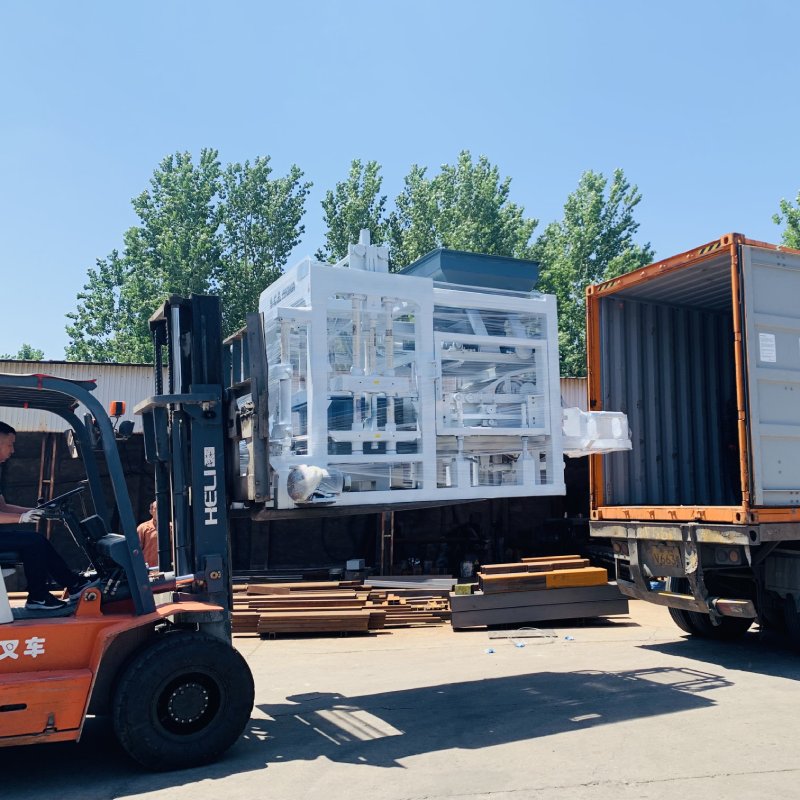
Image source Aiwei Block Machine
Advanced Designs Redefine Building Techniques and Structural Strength
Introduction
In the ever-evolving world of construction, innovative designs are reshaping building techniques and redefining the structural strength of modern buildings. The integration of cutting-edge technologies, novel materials, and advanced engineering principles has resulted in groundbreaking architectural solutions that offer enhanced durability, sustainability, and aesthetic appeal. This article explores the impact of advanced designs on building techniques and structural strength, highlighting the transformative potential of these innovations in the construction industry.
- The Evolution of Building Techniques
From ancient civilizations to the present day, construction techniques have evolved significantly. Traditional methods relied on locally available materials and simple structural forms. However, with advancements in materials science, engineering, and computer-aided design (CAD), building techniques have undergone a paradigm shift, enabling the realization of complex and innovative structures.
- Computer-Aided Design and Modeling
Computer-aided design and modeling have revolutionized the architectural and engineering sectors. Advanced software enables architects to create intricate designs, simulate structural behavior, and optimize construction processes before ground-breaking even occurs. This technology ensures cost-effectiveness, precision, and faster project delivery.
- Parametric Design and Generative Algorithms
Parametric design and generative algorithms empower architects to explore a wide array of design possibilities based on a set of parameters. This approach enables the creation of unique, efficient, and contextually responsive structures that maximize material usage and minimize waste.
- Sustainable Building Design
Sustainability is a core focus in contemporary construction. Advanced designs emphasize sustainable building practices, incorporating features like passive cooling, energy-efficient systems, and renewable energy sources. These designs reduce the environmental impact of buildings and foster eco-friendly communities.
- Biomimicry in Architecture
Nature has always been a source of inspiration for architectural designs. Biomimicry involves emulating nature’s patterns and systems to develop sustainable and energy-efficient structures. From energy-efficient facades inspired by termite mounds to self-cooling ventilation systems based on the design of termite mounds, biomimicry is redefining building techniques.
- Innovative Materials and Construction Techniques
Advancements in material science have introduced a wide range of innovative building materials that offer enhanced strength, durability, and energy efficiency. Examples include carbon fiber-reinforced composites, ultra-high-performance concrete, and bio-based materials. These materials challenge traditional construction norms and enable the construction of lighter and more resilient structures.
- Prefabrication and Modular Construction
Prefabrication and modular construction methods have gained popularity due to their efficiency and cost-effectiveness. Advanced designs are increasingly incorporating these techniques, resulting in faster project completion, reduced waste, and improved quality control.
- Shape-Shifting and Kinetic Architecture
Shape-shifting and kinetic architecture introduces dynamic elements in building design. From kinetic facades that respond to sunlight to retractable roofs that adapt to weather conditions, these innovative features provide functionality and artistic expression.
- Structural Resilience and Seismic Design
In regions prone to earthquakes and other natural disasters, advanced designs focus on structural resilience. Earthquake-resistant designs incorporate flexible joints, base isolators, and dampers to dissipate seismic energy and safeguard occupants and infrastructure.
- Tall Buildings and Supertall Structures
Advancements in materials and construction techniques have enabled the construction of increasingly taller buildings. Supertall structures, reaching heights beyond 300 meters, utilize advanced designs to address unique structural challenges associated with height and wind loads.
- Integrating Smart Technologies
Smart technologies are revolutionizing the way buildings function. Advanced designs incorporate IoT-enabled systems, smart sensors, and automation to optimize energy consumption, improve occupant comfort, and enhance building management.
- Human-Centric Design
Human-centric design puts occupants at the center of the building process. Advanced designs focus on creating healthy, ergonomic, and well-lit spaces that promote well-being and productivity.
Conclusion
Advanced designs are reshaping building techniques and redefining the structural strength of modern buildings. From the integration of computer-aided design and parametric modeling to the adoption of sustainable materials and innovative construction methods, these designs mark a new era of architectural possibilities. With a strong emphasis on sustainability, resilience, and human-centricity, advanced designs not only transform the construction industry but also contribute to a more sustainable and resilient built environment for future generations. As technology continues to evolve, advanced designs will undoubtedly play a pivotal role in pushing the boundaries of architectural innovation and redefining the way we conceive, construct, and experience buildings.
